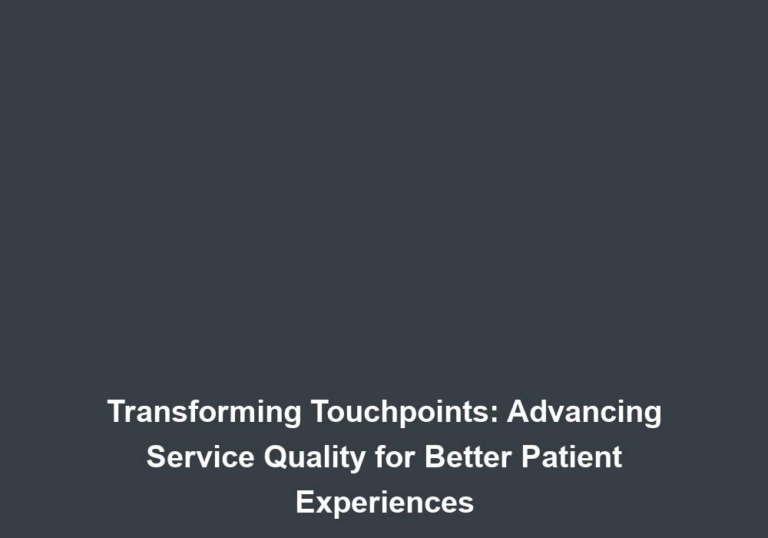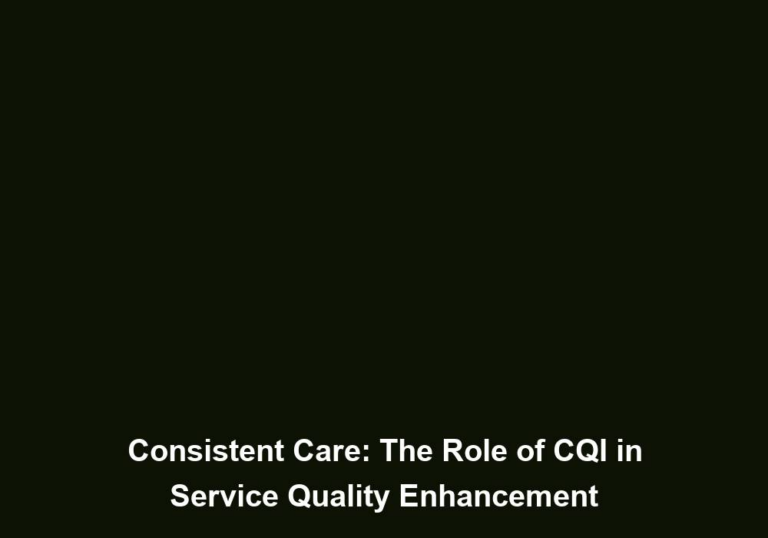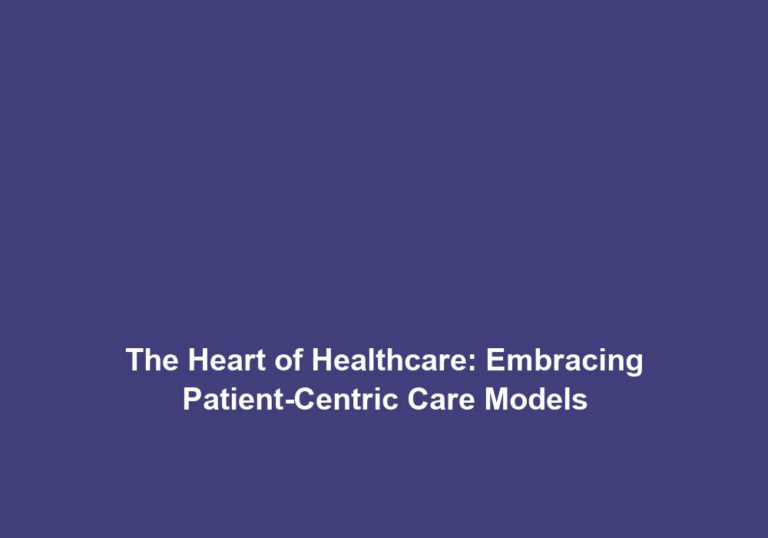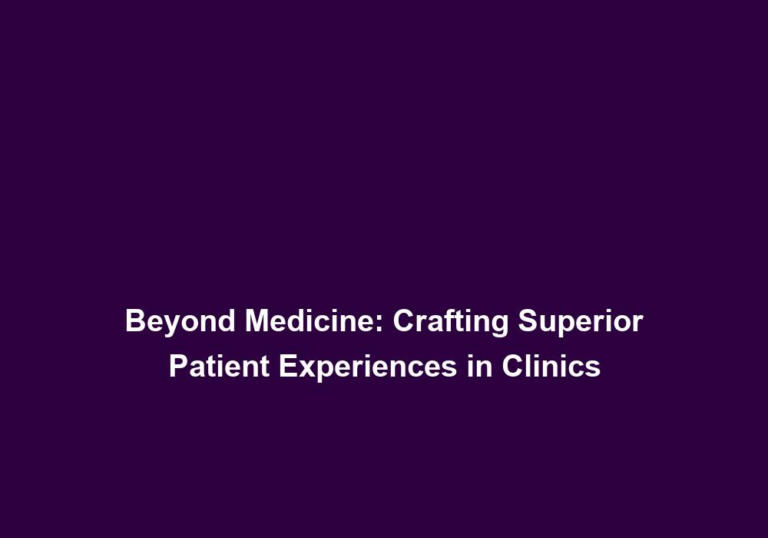Quality Quest: Strategies to Boost Patient Experience and Service Standards
In the healthcare industry, providing exceptional patient experiences and maintaining high service standards are paramount. A positive patient experience not only fosters trust and loyalty but also plays a crucial role in attracting new patients. To achieve excellence in patient experience and service standards, healthcare providers must develop effective strategies and implement them consistently. This article explores various strategies that can help boost patient experience and service standards in healthcare settings.
1. Prioritize Communication and Collaboration
Clear and effective communication is the foundation of a positive patient experience. Healthcare providers should prioritize establishing open lines of communication with patients, their families, and all members of the healthcare team.
a) Patient-Centered Communication
Encouraging healthcare professionals to practice patient-centered communication is vital. This approach involves active listening, empathy, and clear explanations. By actively listening to patients and understanding their concerns, healthcare professionals can make patients feel heard and involved in their own care.
b) Seamless Interdepartmental Collaboration
Promoting collaboration and effective communication between various departments within the healthcare facility is essential. This ensures that all team members are working together cohesively, resulting in improved patient care and streamlined service delivery. By breaking down silos and encouraging collaboration, healthcare providers can create a more efficient and patient-centered environment.
2. Enhance Staff Training and Development
Investing in staff training and development is a crucial step towards achieving and maintaining high service standards. Well-trained and knowledgeable staff members are better equipped to address patient needs efficiently and deliver exceptional care.
a) Continuous Education
Encouraging ongoing professional development through workshops, seminars, and online courses is key. This enables staff members to stay updated with the latest advancements in their field and enhances their ability to provide quality care. By investing in continuous education, healthcare providers can ensure that their staff members are equipped with the necessary skills and knowledge to meet the evolving needs of patients.
b) Soft Skills Training
Providing training in essential soft skills such as empathy, effective communication, and problem-solving is crucial. These skills are vital in building strong relationships with patients and delivering compassionate care. By focusing on developing the soft skills of staff members, healthcare providers can create a more patient-centered and empathetic environment.
3. Streamline Administrative Processes
Efficient administrative processes contribute significantly to a positive patient experience by reducing waiting times, eliminating errors, and ensuring smooth operations.
a) Digital Transformation
Implementing electronic medical records (EMR) and other digital solutions can streamline administrative tasks. This reduces paperwork, minimizes errors, and allows for quick access to patient information, resulting in improved efficiency and enhanced patient experience. By embracing digital transformation, healthcare providers can improve administrative processes and ultimately enhance the overall patient experience.
b) Appointment Scheduling Optimization
Adopting advanced appointment scheduling systems that minimize wait times for patients is crucial. Utilizing technology to optimize scheduling and maximize the utilization of healthcare resources can significantly improve the patient experience. By implementing efficient appointment scheduling systems, healthcare providers can reduce patient wait times and ensure that patients receive timely and convenient access to care.
4. Implement Patient Feedback Mechanisms
Patient feedback is invaluable in identifying areas for improvement and understanding their perspectives. Establishing robust feedback mechanisms can help healthcare providers in the following ways:
a) Surveys and Feedback Forms
Implementing surveys and feedback forms to gather information about patient experiences is essential. Analyzing this feedback can provide valuable insights into areas that require improvement, allowing for targeted enhancements. By actively seeking patient feedback, healthcare providers can identify areas where they excel and areas where they need to improve, ultimately leading to a better patient experience.
b) Complaint Resolution Processes
Creating effective processes for addressing patient complaints promptly and efficiently is crucial. This demonstrates a commitment to resolving issues and shows patients that their concerns are taken seriously. By addressing patient complaints promptly and effectively, healthcare providers can improve patient satisfaction and build trust and loyalty.
5. Foster a Culture of Continuous Improvement
To maintain high service standards and deliver exceptional patient experiences, healthcare providers should foster a culture of continuous improvement. This involves promoting innovation, monitoring performance, and implementing best practices.
a) Quality Improvement Initiatives
Initiating quality improvement programs aimed at identifying and implementing best practices to enhance patient care and service delivery is essential. Regularly assessing performance indicators and benchmarking against industry standards can help healthcare providers identify areas for improvement and drive continuous improvement efforts. By continuously striving for excellence, healthcare providers can deliver the highest quality of care to their patients.
b) Staff Involvement
Involving staff members in the decision-making process and encouraging them to provide suggestions for improvement is important. Fostering a culture where everyone feels empowered to contribute to the betterment of patient experiences and service standards can lead to innovative ideas and improvements. By involving staff members, healthcare providers can tap into their expertise and create a collaborative environment focused on continuous improvement.
By implementing these strategies, healthcare providers can elevate patient experiences and service standards to new levels. Prioritizing communication, investing in staff training, streamlining administrative processes, gathering patient feedback, and fostering a culture of continuous improvement are key steps towards achieving excellence in patient care. With dedication and consistent efforts, healthcare organizations can create an environment where patients feel valued, respected, and receive the highest quality of care possible.







